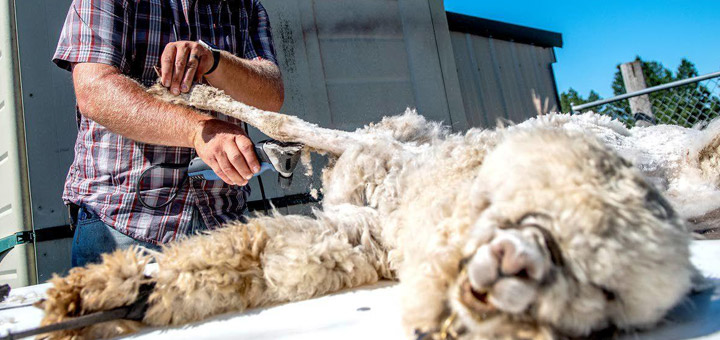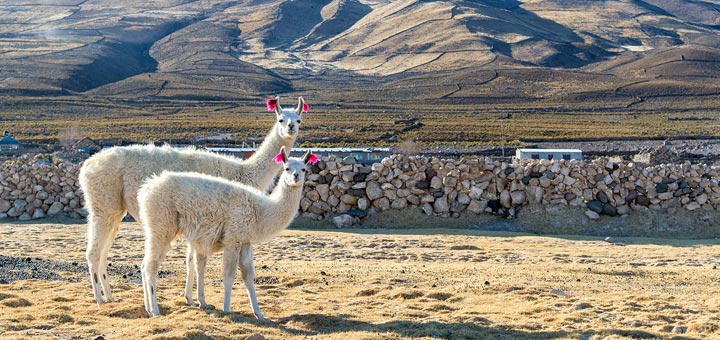As you might already know, the wool from alpacas is soft yet durable enough to create some truly beautiful, and sustainable products like shawls or baby alpaca throws. So when it comes to livestock, alpacas are more interesting to observe from a conservational and eco-minded standpoint.
A camelid species, they are often free-range, and roam with a soft gait on gentle footpads, traversing pastures without negatively impacting the terrain. And unlike cashmere goats, they do not pull grasses from the roots when grazing, allowing the ecosystems they inhabit to be maintained.
However, while alpacas themselves seem to be eco-friendly livestock. Is the wool sheared and alpaca fiber processing done by farmers, cruelty-free? Though the answer is yes, in a general sense, there is some nuance to the question best assessed first by addressing:

An alpaca’s fleece, much like a sheep’s, does not shed naturally in the wild. Therefore shearing is encouraged to avoid health-risks.
As the fleece grows, it creates the danger of overheating. Its eventual density can weigh more than the alpaca is apt to carry. Therefore alpacas are sheared to avoid health risks. Also, the importance of the wool to the local economy.
Being a prey animal, the shearing process is stressful to most alpacas. However, to avoid the health risks of an over-grown fleece, there are ways to lessen the stress of the endeavor and make it cruelty-free.
To shear an alpaca safely, at least three people must be present. One person to cut the fleece (with scissors rather than shavers), one to separate it for later fiber processing, and the last to comfort the alpaca to reduce stress.
While shearing a standing alpaca might be less-stressful, its free-range of motion can also cause it to be cut more easily. Therefore, a majority of alpacas are sheared lying down, with their feet restrained. And, although the process looks tense, it is done only to keep the alpaca safe.
Waiting too long to shear an alpaca can cause the fleece to collect too much dirt and general residue, while shearing too often can cause the animal to get cold in the winter months. With that in mind, the best practice is to shear an alpaca once a year, in the summer months.
You might also like: Learn How Alpaca Wool is Produced

The majority of the alpaca population, nearly 84%, exists in and around the Andes Mountains of Peru—and because of the large amount, South America is also the primary exporter of alpaca wool.
The smaller farms of Peru care for the alpacas as they would for a family member—fostering a limited-stress, free-range environment, and shearing them not only for their own family’s livelihood but to avoid the health risks of an overgrown fleece.
The shearing process on these farms follows what was mentioned above, taking care to limit the stress on the alpaca, and only shearing once a year during the summer months to avoid overheating—as well as giving time for enough of the fleece to grow back to keep the alpaca warm in the winter months.
While most alpaca fibers are created cruelty-free, the process of harvesting the wool can absolutely be done in a cruelty-free manner—and, indeed, has been done that way by smaller farms for hundreds of years. Understandably, the hardest part is to know the source of your alpaca wool products and the process the alpacas underwent to have it created.
For more information on how we source our alpaca wool cruelty-free, check out our blog to get an in-depth look at the fiber processing of alpaca wool as well the beautiful products we create with it at: https://www.silkeborg-peru.com
In Silkeborg Uldspinderi we are here to help you. You will have at your disposal many high-quality products. If you want to buy any alpaca scarves, shawls, cushions, or throws, please don’t hesitate to contact us through our contact page.
